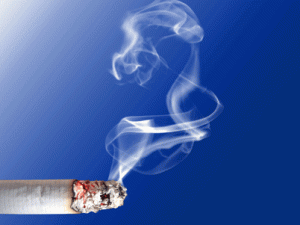Heart-to-Heart Conversations about Carpet Odors
 As the weather gets colder and the days get shorter, people have a tendency to go inside, make sure the windows are closed, shut the door, and spend more time inside. With less airflow and ventilation, and the simple fact that the people and pets living in a home are spending more time there, the likelihood of odors emanating from the carpet becoming more obvious greatly increases. The problem is that the homeowner is often the last to notice or know. Why? – Because they are used to the smell. The time often comes when someone, and often that someone is you, needs to have a heart-to heart conversation about carpet odors with the homeowner. So just why are the carpet odors anybody’s business other than the occupants of the home?
As the weather gets colder and the days get shorter, people have a tendency to go inside, make sure the windows are closed, shut the door, and spend more time inside. With less airflow and ventilation, and the simple fact that the people and pets living in a home are spending more time there, the likelihood of odors emanating from the carpet becoming more obvious greatly increases. The problem is that the homeowner is often the last to notice or know. Why? – Because they are used to the smell. The time often comes when someone, and often that someone is you, needs to have a heart-to heart conversation about carpet odors with the homeowner. So just why are the carpet odors anybody’s business other than the occupants of the home?
A pricey condominium in a Chicago high-rise was proving to be a very hard sale. The property had been on the market for over six months—a long time even considering the tough real estate market. The real estate agent decided it was time to have a “heart-to-heart” conversation with the frustrated seller, an older gentleman who had lived in the unit for more than a decade.
Did the agent tell his client the price was too high? Actually, both the agent and the seller believed the property was priced rather competitively.
Maybe the property needed some updates, maybe a new kitchen? While the property was certainly not brand new, the kitchen and bathrooms were recently updated, making this unlikely the issue.
Instead, the heart-to-heart the agent had to have with his client focused on something entirely different—the condominium smelled. While the seller tried to refrain from smoking in the condo, there were many days and nights when it was simply too cold to go outside, so he smoked inside. The years of smoke and odor buildup had taken its toll on the condo, especially in the carpets and certain fabrics. Upon entering the property, this  was often the first thing visitors and, most importantly, potential buyers noticed.
was often the first thing visitors and, most importantly, potential buyers noticed.
When the agent mentioned that he believed the smoke odors most likely emanating from the carpets were contributing to the slow sale, the client indicated he never even noticed the smell and questioned if there even was malodor. This is not uncommon. Long-term occupants of a building or residence where odors are a problem often no longer notice them. Additionally, men, such as the seller discussed here, typically do not notice odors or smells as much as women. And, older people in general are not as odor conscious as younger people.
A homeowner finally decided that the real estate market in their area had gotten active enough that they could get the price they needed to be able to sell their house and get out from underneath an overbearing mortgage payment. They had been “upside down” for several years but wanted to keep their commitments to their bank, and had been continuously making their mortgage payments. Finally the pressure could be relieved. They had just seen two neighbors houses down the roads sell literally within days of being put on the market, and in both cases, the homeowners received bids for more than they were even asking. They had a beautiful Victorian style home nestled up against some beautiful, mature evergreen trees on over an acre of land. The home had a beautiful wraparound porch on the front and a great deck for entertaining out back. The home was around 15 years old but in reasonable good condition. They had a thick off-white cut pile carpet installed throughout much of the house. The carpet definitely needed cleaning. So they hired a local coupon carpet cleaner whose price was just too good to resist. Their relator had recommended another company she worked with on a regular basis, but their prices seemed so much higher.
The cleaning turned out to be a disaster. The carpet looked better, but not great. The problem was that it was in the middle of winter. The homeowner had a couple of dogs, but they were generally well behaved, and  usually went outside to “do their business.” Now though, the whole house smelled like a mixture of mustiness and dog pee. Potential buyers were looking at their house, and quickly leaving. Offers were not coming in.
usually went outside to “do their business.” Now though, the whole house smelled like a mixture of mustiness and dog pee. Potential buyers were looking at their house, and quickly leaving. Offers were not coming in.
These situations are not uncommon. Smoke, typically from cigarettes, is one of the most common carpet odors in both residential and commercial properties. Along with smoke, some of the most frequently encountered odors include:
- Pet urine
- Mold and mildew from water damage and mustiness
- Off-gassing from chemicals and materials used in the home.
- Food and beverages that have seeped into the carpet
So how do you deal with the emotions and potential hurt feelings of folks you want to be your carpet cleaning customers, but that you have deliver some not-so-wonderful news about the odors in their home?
A Heart to Heart Conversation – “Honey-Slap-Honey”
“Honey-slap-honey” is a term used to describe how to deliver not so great news or critique a person who you want to have a good relationship with or perhaps even that works for you. Always start and finish any conversation with honey – in other words, compliments and praises. In our cases above, both the condominium and the home had plenty of wonderful attributes. Compliment the homeowner on their choice of location, their décor, their man cave, or anything you can think of about their home which you genuinely like. Don’t be deceitful or phony. Find something you really do like and start and finish the conversation with something positive in between the “slap” – delivering the not-so-wonderful news.
Secondly, deep down the homeowner is likely a little embarrassed that another person had to point out to them the odor problem in the first place. They may be a little worried they hired a competitor on price alone who could not solve the problem or actually made it worse. The truth is though that both of these things just mean they are an average person. Relieve them of this potential stress immediately by telling them what they are encountering is not uncommon. You can even talk a little bit about the science of how we perceive odor and that we do get used to the odors around us. Explain you are here to solve their problem, just like you have solved THESE EXACT SAME problems for lots of other homeowners.
Finally, separate yourself from all of the magical odor control treatments they have heard of or been promised with the science of odor control. Explain how odor is an effect. It has a source which emits gases. These gases travel throughout the house by means of air movement. When the doors and windows are closed, they become more obvious. Explain how odor is interpreted by the olfactory lobe in the brain, and like many things that the brain interprets, different people can reach different conclusions about the same odor. Explain to them that the first rule of permanently eradicating any odor is to eliminate the source, and since we and our beloved pets are part of what is the source of the odor, it is an on-going process that requires knowledge of the science of control, not just masking and covering up one odor with a stronger perfume or fragrance.
Traditional Odor Eradicating/Elimination Strategies
There are some traditional ways to remove odors from carpets and many continue to prove quite successful. Removing odors from carpets and masking odors with a fragrance are two different things. While some strategies may include a fragrance, removing offensive odors means attacking the source of the odor so it has been eliminated.
Here are the basic categories of odor elimination and deodorization treatments you have at your disposal as a professional to deal with the most common odor problems found in carpets:
- Urine Pre-treatments: These solutions typically used as a pre-spray, are used to dissolve and break down urine and feces deposits left in the carpeting. They are the most effective way of dissolving the lipids that bind the urine deposits to the carpet. The more of the urine contamination that you can effectively neutralize and remove from the carpet, the easier the treatment for deodorization will be. Whatever stain or odor control treatment is your favorite for treating urine, using a urine pre-treatment, such as UPS will make your treatment faster and more effective.
- Pairing Agents: A pairing agents is defined as a solution which combines with the malodor molecule or substance and then gives it some of its own chemical properties which transforms the odor’s chemistry into a new non-odorous compound. The pairing agent must make direct contact with the malodor source in order to be effective. Some pairing agents contain aggressive attacking and counteracting agents where the aggressive pairing action transforms the odor cell and the condition of the total environment. Pairing agents, such as OdorMate Tropical Breeze, are typically used to treat and eliminate tobacco and smoke odors, and also work effectively against chemical off gassing odors.
- Chemical Oxidizers: These chemicals are derived from peroxide compounds and are activated by effervescent activity. They oxidize and help decompose odor-causing bacteria—very often a source of carpet odors—which are then removed in the extraction process. They are typically used as powders, mixed with hot water, and then poured onto the carpet where the source of the odor is contained. After a few minutes the, solution is extracted from the carpet, usually with a subsurface extraction wand or tool. These oxidizers are effective at eliminating the yellow carpet stains caused by urine contamination, as well as oxidizing the odors, making them a growing favorite with professionals. They can also be used effectively against mustiness and mildew odors, and to eliminate odors caused by chemical off-gassing. Some of these powder oxidizers, like USR with Multi-Phase, are fortified with an encapsulating and bonding deodorizing agent to provide additional odor control benefits.
- Electronic oxidation or deodorization– The production and use of ozone gas. A gas produced from arcing electricity through oxygen molecules. This gas oxidizes odors it comes in contact with, totally destroying the odor. Ozone is typically more effective on chemical off gassing and smoke odors. As a general rule, it is too slow for use on urine odors. Ozone must only be used in unoccupied areas.
- Encapsulating and Bonding Deodorizers – Specially formulated deodorizing treatments that bind to and encapsulate odor molecules, effectively eliminating the odor cells ability to produce odors. In addition, most of these types of solutions also contain a pleasant pairing fragrance specifically geared to treat all types of malodors – urine, smoke, chemical off-gassing, and mustiness. These broad based deodorizers need to come in direct contact with the source of the odor for maximum effectiveness. MultiPhase is an example of this type of product and was the pioneer in the development of his technology.
- Vapor phase diffusers- The diffusion into the airspace of natural essential oils and odor neutralizing compounds that have been suspended into a membrane. These diffusers breathe a penetrating dry vapor into the air. The most popular vapor diffusers are made by Vaportek®, and have been found to be very effective against smoke and tobacco odors.
- Biocides/Disinfectants/Sanitizers – Disinfecting agents that have the ability to kill a broad range of microorganisms, but not necessarily all their spores. Disinfectants are primarily used to resolve odor problems related to microorganisms. They can be effective against mustiness and mold smells, although their primary purpose is to kill the source of the odor – the microorganisms. These types of products use is highly regulated under federal law, so become familiar with the product you are using and the directions called for on the label.
- Digesters (Enzyme Deodorants) – These are living organisms (bacteria) which produce enzymes that digest or consume decaying organic and protein contaminants. They contain living organism(s) that emit an enzyme to consume protein found in odor-causing bacteria, which destroy odor. They are often used for deodorizing decaying organic materials, such as urine, meat, fish, milk, blood, body fluids, and human or animal waste. They are typically effective against urine and protein odors, but to work effectively need prolonged contact time with the odor source.
- Sealing – Sealing agents are solutions which “lock-in” odor molecules by preventing the evaporation of odorous gases.The sealing agent is applied to sources of malodor to prevent the further evaporation of the malodors into the airspace. Sealing is often required on various salvageable surfaces exposed to concentrations of malodor. Sealants are often applied to wood, concrete, subflooring, duct and ventilation systems etc…, to prevent wicking of odor contamination from urine and smoke deposits.
Effective odor control methods, procedures and agents can include masking, oxidizing, adsorption, absorption, counteracting, digesting, sealing, killing, and pairing. “The effectiveness of all of these products – as with most all cleaning chemicals — invariably improves when using a high performance hot-water extraction portable or truckmount to effectively clean the contamination out of the carpet both before and after the deodorization treatment
When Problems Persist
There can be many reasons why a carpet odor problem persists. Possibly, more effort is needed in determining the cause of the odor or its actual source. Using a black light and/or a moisture sensor can help find the source. In some cases, it may not be the carpets at all, but walls, furniture, or other surfaces can be contaminated.
In other cases, the wrong chemicals or combination of chemicals used to eliminate the odor were employed. Or possibly, the machine did not have the extraction power to effectively remove the source of the odors.
Finally, if odor is still a problem after you have employed a combination of usually effective treatments, and you are sure it is still coming from the carpet then you must have a heart-to-heart discussion with the customer as to their remaining options which generally means the carpet and cushion needs to be replaced and the subfloor underneath sealed with an effective agent.
For a free step-by-step interactive electronic Deodorization and Odor Control Procedural Reference Guide that provides more specific details on the treatment procedures discussed, simply click here.
Tags: carpet odor, Deodorization, encapsulation, food, mildew, Mold, Multiphase, Odor, Odormate, oxidizers, Pet, pet odor, Sanitizer, Sealing, smoke, UPS, urine, USR with Multiphase






